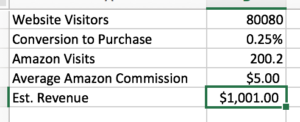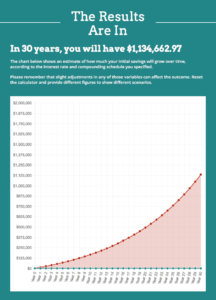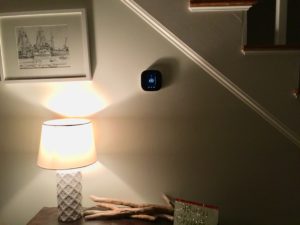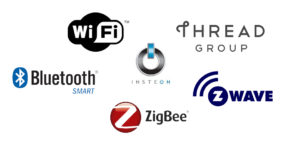I’ve set a personal goal to make $12,012 in passive income in 2017. Here’s why and how I am going to do it.
On New Year’s Eve, I had a couple of drinks with some people that I like. We started talking about what we wanted to achieve in 2017, and I blurted out that I wanted to start a business “on the side”. My ultimate goal is to make $12,012 in passive income in 2017.
Why $12,012?
This is not twelve thousand dollars. Twelve thousand dollars is way less impressive.
Simply: $12,012 is $1,001 a month for a year.
$12,012 in passive income isn’t life-changing money, but it’s more than beer money. It’s a decent amount of spending cash if you’re going to spend it, and a million dollars if you bank all of it for 30 years.
But this isn’t necessarily about spending money or saving money. It’s really just to prove that I can figure out how to do it in the first place. I like a challenge.
Why passive income?
Active income typically requires time. Since I have a full-time job and a 1-year old, I don’t have the luxury of a lot of time. So for the sake of this experiment, if I can figure out how to make $1,001 passively in one month, I will consider it a success.
Why don’t you just ask for a $12,012 raise?
I have a great job that I love, but my ultimate dream is to one day run my own company. Not necessarily to become rich, retire early or have a private jet (although that would be perfectly fine).
I want to make $1,001 in a month to prove to myself that I can start a business for the same reason that people build a cabin in the woods completely off the grid:
The ability to rely entirely on oneself for sustenance.
Same basic idea, but a little different.
I don’t feel shackled to my job. Like I said above, I actually love my job (and I’m not just saying that in case someone reads this).
My wife and I have an emergency fund, and we have no debt besides our house. But the idea that somebody else gets to decide if I get a paycheck next week makes me irrationally anxious – even when that risk is extremely low.
Picking a strategy to generate $1,001 of passive income in a month
I’ll be completely honest: I’m not entirely sure how I’m going to pull this off. I don’t have any sure-fire ways to make this work. I don’t even have any probably-will-get-me-500-dollars ways to make this work.
But I think I could actually use that to my advantage.
For my first experiment, I’m going to try the most passive of all revenue channels, and one that I used to great success in the past.
Affiliate Marketing and SEO
The Internet, and SEO, is serious business.
For those not “in the know” (aka: for those “who aren’t nerds”), SEO stands for “search engine optimization”. SEO is a strategy in which you write and organize website content in a specific way so that the search engines rank your website high for specific search terms.
Affiliate marketing is a revenue stream by which you drive traffic from your site to someone else’s site. Then, when the visitor makes a purchase, that site gives you a cut of the sale (5-10%).
So, for this strategy to make money, I need to drive traffic enough traffic to my site so that an even smaller amount of traffic ultimately buys enough stuff from another site to make me $1,000 in a month.
How do I make this work?
- Target search terms that are warming up, so that my website can rank highly in popular search results as quickly as possible, and for as long as possible, since search engines are my preferred traffic source.
- Target relatively expensive items, so that 5-10% of a sale results in more than just a few cents, since only a portion of my traffic will ultimately convert to a sale (especially early).
- Target a market that is interesting enough to spend nights and weekends on, since this is supposed to be passive income 🙂
Dude, check out my new thermostat
…is not something you would have expected me to get excited about a year ago, but here I am.
Actually a picture of my new thermostat installation. Harder than expected. Prouder than expected.
As a new homeowner, I find the idea of making my “normal” home smarter to be a fascinating challenge. The idea of being able to monitor, control and automate major parts of my house is a very cool idea in my mind.
While researching how to add a new heating zone to my house, one huge thing stood out to me:
The smart home market today is incredibly fragmented.
We’re in the early stages of this new technology where everyone is attempting to create the standard. We’ve seen this happen recently with HD video (remember HD DVD’s?) and cell phone chargers (is it mini or micro USB?).
This isn’t even close to a complete list of competing smart home protocols.
In the smart home market, there are still standards for communication: Z-Wave, Zigbee, Insteon are just three of about ten. Some protocols are open source, most are proprietary.
Despite these protocols being in the market for years, companies are still trying to create their own standards! See: Apple Homekit.
Standard fragmentation makes it hard to understand what you should buy, and even harder to know what’s still going work in three years.
This is really annoying for anyone trying to build a smart home (especially those who are starting now), since you generally want your devices to communicate easily with each other.
Homeowners need a way to know what they can, and should, use to make their home smarter and more efficient.
I’m building a tool to help you pick smart home equipment that will work best for your home, based on what you want to control, how you want to control it, and the equipment that already exists in your house.
Homeowners want help finding smart home devices that will work well with the existing equipment in their home, and that they would use a tool like this because buying the wrong equipment is a frustrating (and expensive) mistake.
So how is a device selector going to get you $12,012?

These are lightly educated guesses.
Whenever the tool suggests a device, it will direct you to purchase it from Amazon using the Amazon Affiliate Program. Smart home devices are typically $50 or higher, so each closed sale should net $2-10 each.
I am expecting 0.25% of traffic to convert to an Amazon purchase at an average of $5 per commission. If these conversion and average amazon commission holds up, I can theoretically make $1,001 by driving 80,080 visitors to the website in a month.
Starting Now
I’ve started working with a data analyst to collect data on every single device that you could use in a smart home: door locks, lights, thermostats, music systems etc.
While he’s collecting and organizing this data, I’m working on building SEO for the new site by writing long-form articles targeting search phrases typical for someone searching for smart home devices, like smart hubs or Alexa.
What’s Next
I’m continuing to work on writing articles to build some search relevance for my new smart home website, and have begun working on the selection tool. In typical MVP style, I’m hacking it together with as little effort as possible, to see if it’s even useful.
If you’re interested in knowing when it’s available, enter your email address below (or just click here):





